#tradition celte
Explore tagged Tumblr posts
Text
My necklace was made before I even created my tumblr account. I wear it everyday, yet it never occurred to me that I could share it here.
This is an Ogham/Ogam protection charm I made by stripping a pine branch, carving a flat edge, and burning the word cosaint (Irish for protection/defense) into the wood. It’s created its own finish with the natural oils from my fingers, enhancing the color and shine of the wood.
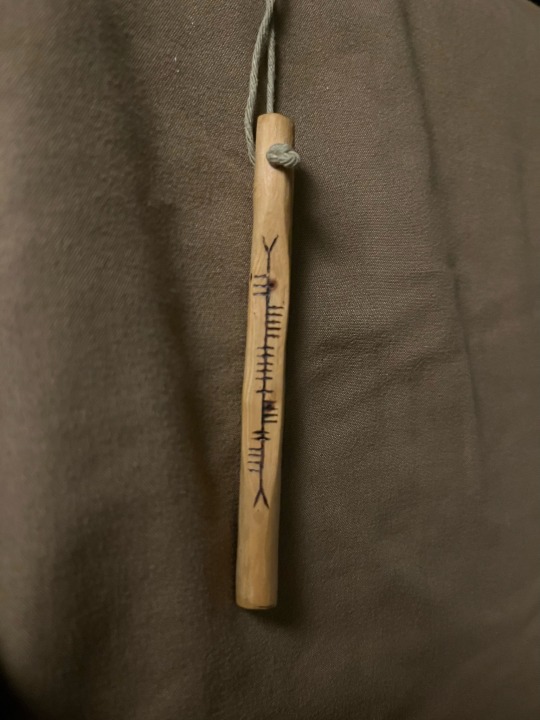
#folk witch#irish witchcraft#witch blog#pagan witch#witchcore#traditional witchcraft#witch#witches#green witch#witchcraft#folk witchcraft#witch aesthetic#witch community#witchblr#witches of tumblr#cunning folk#cunning woman#ancient celts#celtic folklore#celtic#scottish folk magic#scottish folklore#irish folk magic#irish language#ogham#charms#magick#ogam
144 notes
·
View notes
Text
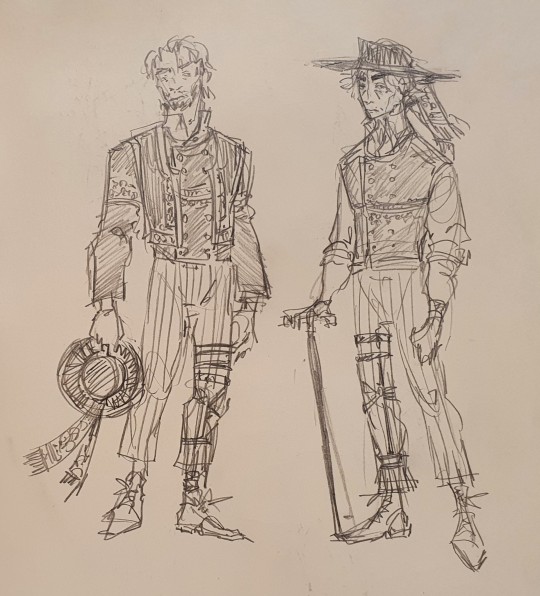

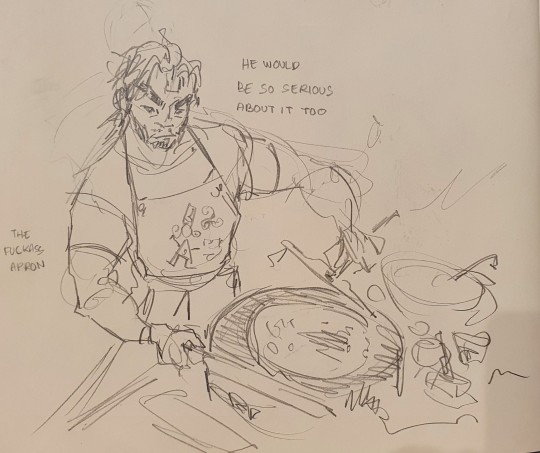
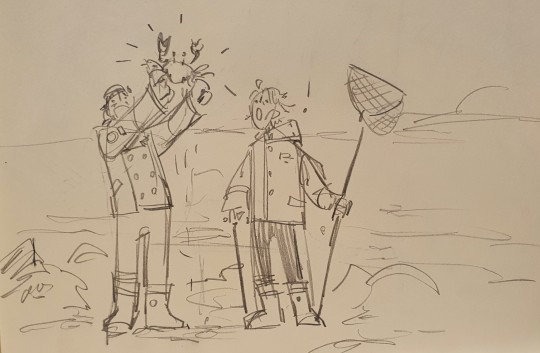


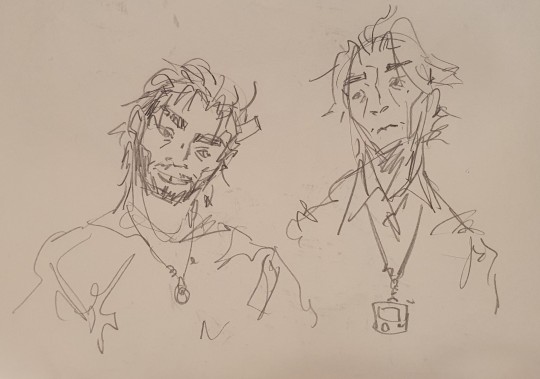
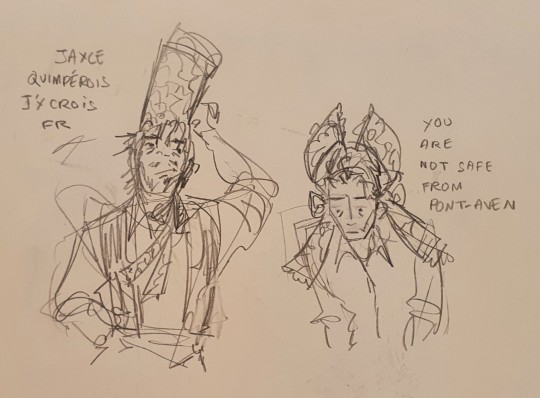
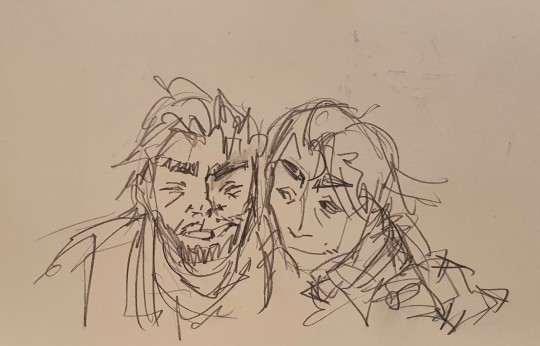
May I present Jayvik but Bretagne because its my culture and I get to do whatever I want
(I lost it)
#my art#arcane#jayvik#traditional art#sketch#sketchbook#jayce talis#jayce arcane#viktor#viktor arcane#bretagne#brittany#celt#celtic#viktor is l'ankou wich is death in our folklore and Jayce is king Gradlon wich is very important to me#jayce to me is a crêpe making machine and can go at it for hours on end during family dinners
64 notes
·
View notes
Text

"The beliefs and practices of pagan origin that survived Christianity were those that the men of the first Church called "pagan", that is, typical of the inhabitants of the "pagi", of the peasants. It was more difficult for the higher mythological systems, the great theogonies, to remain alive. The belief in a numen of the fountains, of rivers, of forests, or caves (or a family cult) could survived more easily than the complex cults of the Greeks and Romans".
-Julio Caro Baroja.
#mythology#paganism#europe#tradition#european religion#indo european#PIE#numen#Greeks#Romans#Celts#Caro Baroja#Christianity
21 notes
·
View notes
Text

A quick landscape There is no way to the top of the pillar, magical means prevents all from entering it. For there is a seat, a stone which the High Chief of Albion shall sit after pulling the sword from the stone, and unite the island under one chiefdom.
5 notes
·
View notes
Photo

TRADITION | Toussaint, Samain, nuit d’Halloween et Fête des morts ➽ http://bit.ly/Samhain-Halloween-Toussaint Existant voici plus de 2500 ans et se déroulant tous les 31 octobre, la fête celtique de Samain fut adoptée par les Gaulois, marquant la fin de l’été et le début d’une nouvelle année. Grégoire IV fixant en 837 la Toussaint au 1er novembre, le Samain devint « Halloween »
#Fête#Celtes#Celtique#Gaulois#Samain#Samhain#Toussaint#Halloween#Jour#Morts#Religion#Année#Saisons#Coutumes#Traditions#Rites#31Octobre
16 notes
·
View notes
Text
Summer Solstice
Today we celebrate the Summer Solstice in the Northern Emisphere. Image Taken from Internet The longest day, the shortest night. A turning point in the wheel of the year, where the sun reaches its zenith and bathes the Northern Hemisphere with its light. This is the Summer Solstice, a phenomenon not just of scientific wonder, but of ancient reverence. From the pyres of Celtic festivals to the…

View On WordPress
#Alchemy#Balder#Bonfire#celebrations#Celts#divination#Earth#Fae#Feasting#Freyr#Herbal Magic#Maypoles#Midtsommar#Norse#Norse traditions#Pagan Celebration#Summer Solstice#sun#Sun Worship#Wheel of the Year#Yggdrasil
5 notes
·
View notes
Text
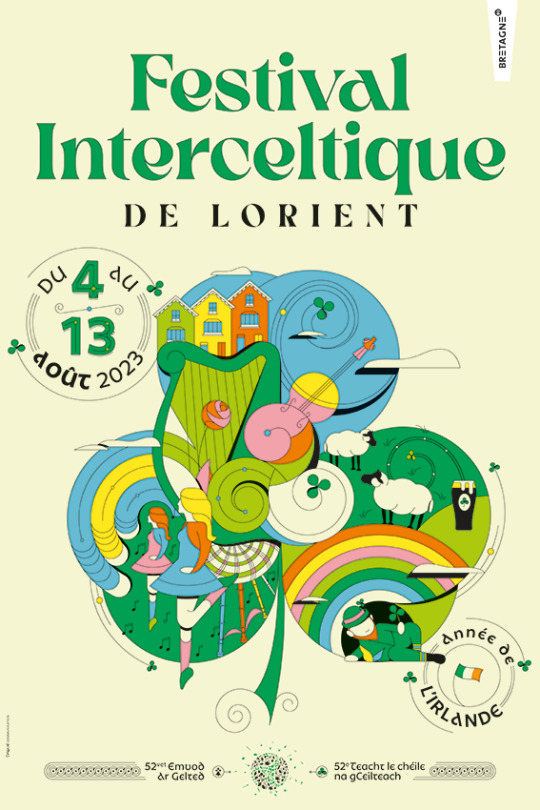
Festival interceltique de Lorient 2023 - du 4 au 13 août
5e édition - Année de l'Irlande
C'est dans 3 mois !!...
#breizh#celtic#festival#music#celtic music#interceltique#FIL#bretagne#Lorient#musique celtique#bzh#irlande#traditional music#pays celtes#culture celtique#ireland#ecosse#pays de galles#man#asturies#affiche#morbihan#musique bretonne#musique traditionnelle#musique celte#brittany#scotland#wales#asturias
23 notes
·
View notes
Text
does anyone know resources for me to learn more about celtic traditions from before christianity? i have predominantly celtic ancestry and want to learn more about it. i also have nordic ancestry and i will probably learn about heathenism but im focusing on the celtic side now since i have more celtic than nordic.
22 notes
·
View notes
Photo

(via Samhain: Fire and Winter amongst the Celts)
2 notes
·
View notes
Text
A brief thought as you go about your day:
As witchcraft/folk practitioners, do not give out detailed personal information to just anyone.
I’ve seen so many bios and posts on Tumblr alone containing peoples’ real names, ages, birthdates, full astrology charts, personality types, sexualities, images of themselves either in their profile picture or in a pinned introductory, and a couple times I even saw blood types. And with trauma dumping flooding social media, others get a clear view your mental and emotional wellbeing as well.
This opens you up to potential magickal/spiritual warfare. You’d like to think that others in this community are just as kindhearted as you are. But like in real life, you never truly know someone’s intentions. And since this business is all about intentions, make one of yours to keep yourself safeguarded.
Cleanse your space and yourself
Ward your home
Refresh protections
Physically lock your home’s entrances and exits as necessary
Do not share in-depth information online with random strangers
BE. MINDFUL.
Stay safe!!
#celtic#folk witchcraft#witch community#witchblr#witchcraft#witches#green witch#witch#witch aesthetic#witchcore#folk witch#witch blog#traditional witchcraft#irish witchcraft#irish folk magic#scottish folk magic#Scottish witchcraft#ancient celts#celtic folklore#witches of tumblr#magick#folk magic#safety
72 notes
·
View notes
Text
The thing about people like this (aside from their desperate love of ahistorical narratives, of course) is that they believe there's only ever been one civilisation, and it belongs to them. Everyone else is just copying it, badly, or doesn't really count.
They also don't believe in positive or neutral change. There's just The Way Things Should Be (the way their ancestors or their god made it, depending on the individual) and The Inevitable Cultural Decay caused by anyone they don't agree with.
In this cardboard cutout narrative, they need the legacy of history but they can't comprehend that morals shift over centuries, cultures over decades, and borders and identities in as little as years.
They need a story that doesn't change to prop up a worldview that very much doesn't work with reality, past or present.
This is how you get people insisting that Greece was inhabited by god-fearing christians 3,000 years ago. Or that everyone in the Roman Empire was straight. Or that Vikings were protestant.
They'd fall down dead if they knew how many of our ancestors had to be forced to convert to christianity, how many of them came from Africa and the middle East in the last few hundred years, or what they actually believed was moral and right.
It's a view of the past that doesn't stand up to even the most cursory scrutiny, which is why they're so defensive about it.
The idea of "western civilisation" as some sort of a homogenous monolith is definitely just a white supremacist dogwhistle, but the way these people talk about it makes it sound downright funny. This Unified White Culture that started in Ancient Greece and practices a religion that was born in the Southern Levant when a small doomsday cult escaped containment, and then there were vikings and shit and these are all just one unified People and Culture, despite of me having more mutual DNA with a neanderthal than a spaniard. Probably more mutual culture, too.
And then this spectacular glorious monolith empire is as fragile as a victorian orphan dying of tuberculosis. Must be protected from the slightest draft from any direction, at all costs, because unlike the cultures of countless diasporic peoples, the mighty Western Civilisation will die if it is not at least a 90% majority at all times. Every three minutes there's something new that is the harbinger of societal collapse, the beginning of the end, some sort of a slow-motion apocalypse caused by people saying stuff and doing things, and wearing clothes you don't like.
"Sure you're laughing now but where will you be when the barbarians are at the gates?" I'll be at the gates, obviously. The faggots are coming and we have a trebuchet.
#somebody find one of those pictures from like the 70s of Celts sacking Rome in the tackiest multicolored outfits you've ever seen#faggots time to ready the trebuchets in our most ancient and treasured tradition#we're here we're queer and will fuck up your shit#just like we have since the dawn of civilisation#invite the Vikings and their gods#also the greeks and their boyfriends#theres more of us than there are of them no matter how far back you look#also i would 1000% buy a rainbow t-shirt with a trebuchet on it
8K notes
·
View notes
Text

"Do not think of the Proto-Indo-Europeans as a people who died out a long time ago. They live, and their culture lives, in us; transformed by time and the influences of other cultures maybe, but still recognisable at the core of our values, language, and culture. By understanding them, we understand ourselves."
-Ceisiwr Serith.
#Ceisiwr Serith#yamnaya#proto indoeuropeans#PIE#R1b#europe#birth of europe#horses#horsmen#carriots#corded ware#bell beakers#celts#tradition#deep ancestros#indo european#sky father#indo european religion#dyeus pter#zeys#zeus#jupiter#IE
38 notes
·
View notes
Text
Imbolc
Imbolc is celebrated February 1 to 2. The traditions of Imbolc reach back deep into the pagan history of the Celtic peoples of Ireland and its neighbours. With the Christianization of Ireland, Imbolc was replaced by St. Brigid’s Day . Imbolc as a cultural event has seen a resurgence in recent years, mainly in the neo-pagan community. Imbolc has also grown in popularity amongst others who desire…

View On WordPress
1 note
·
View note
Text
I find Halloween really interesting from an anthropological perspective. It started with the Gaelic harvest festival of Samhain, which was held on November 1st, when the veil between the worlds of the living and the dead were said to be the thinnest. The ancient Celts would dress up in costumes, acting as the spirits of the dearly departed, and go from house to house, accepting food as offerings on the spirit's behalf.
This was something the ancient Celts were doing from the 9th century and it's survived, albeit in a heavily modified form devoid of its original context, until the modern day.
If there is an afterlife where our spirits go after we die, I wonder if those ancient Celts can see us from there. I like to think they would be happy that, even if their culture and religion had been largely wiped out by Romans and the Catholics, we're still celebrating their celebrations. That we're still dressing as something spooky and going house-to-house asking for food.
#halloween#samhain#spooky season#all hallows eve#i also think it's neat that the jack o'lantern; such a staple of halloween; comes from Ireland. Descendants of the Celts#of course in the modern day with electric lighting and all that I don't think anybody really uses candle-fed lanterns anymore#so the impact of a lantern carved from a vegetable is lost on us since we lack the cultural appreciation for such a light source#but still. This one weird tradition somehow lives on#the asking for food and putting a candle into a vegetable. These things continue on for some reason.
1 note
·
View note
Text
And going back even further, it was traditionally believed that the line between witches and faeries were very blurred.
They had the same powers, the same moral ambiguity, and had their place in the otherworld.
The first stories of witches as everyone knows knew them, were as spirits or faery-like creatures associated with the night, the woods, bodies of water, etc.
So really, Terry Pratchett was restoring long-held beliefs
I just realized why Terry Pratchett making fairy godmothers a sub-category of witches in his Discworld ("Witches Abroad") is actually deeper than I thought - beyond just "they are other all-female magic-users with magic wands".
I think it is a nod to how in old and traditional depictions (especially British ones) Cinderella's godmother is very often drawn as witch-looking or bearing witchy attributes:




I say "especially British" because unlike in France where witches and fairies are very different, in England fairytales are under the patronage of "Mother Goose", traditionally represented as a kind and benevolent witch...



... resulting in this tradition of making the fairy godmother a "Mother Goose" figure, a witch-like fairy. Hence why I think the very British Pratchett would be more interested in making fairytale-godmothers witches rather than fairies.

#fairy godmother#cinderella#discworld#terry pratchett#mother goose#cinderella's godmother#witches abroad#discworld witches#folk witchcraft#traditional witches#traditional witchcraft#folklore#british isles#britons#celts#picts#faery lore#faery#fae
401 notes
·
View notes
Text
Célébration de Samonios : Lien entre Deux Mondes
Samonios, entre deux mondes Samonios, chez les Celtes, jouxte deux mondes, deux années. Un moment privilégié où le monde humain communique avec le Sidh parce que ce temps n’appartient ni à l’année qui se termine, ni à celle qui commence. Samonios réunit tout ce qui a été vécu dans l’été tout en entrant dans le début de l’hiver. C’est la fête de la grande divinité souveraine sous ses aspects…
#chamanisme tradition ancestrale cérémonie guérison#chaudron#Cycle des 8 initiations#gundestrup#Plantes des celtes#rituel#samain#samhain#samonios#stage chamanique
1 note
·
View note